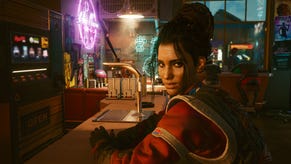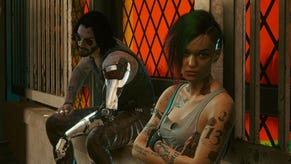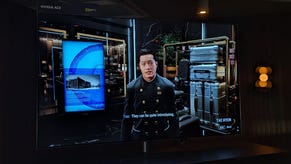Cyberpunk 2077 ray tracing: what does it look like and how does it run?
And is it worth it?
Cyberpunk 2077 is without doubt one of the biggest ray tracing games that's ever been released on PC, and it should come as no surprise that it's also one of the most demanding. Like Metro Exodus before it, CD Projekt Red have gone all in on this ultra-realistic lighting technology to make Night City look and feel like a living, breathing city, using everything from ray traced reflections and shadows to three separate ray traced illumination techniques. Indeed, if you've been searching for an excuse to show off your new Nvidia RTX card, this is definitely the game you've been waiting for. Or is it? Night City can look spectacular with all of its ray traced bells and whistles switched on, but only a select few GPUs are really capable of depicting this futuristic cityscape at playable frame rates.
To help you get the best ray tracing performance, I've put together this handy guide, showing you what the game's ray tracing looks like in the flesh compared to its regular non-ray traced quality settings, as well as what kind of performance you can expect to see at 1080p, 1440p and 4K across almost every Nvidia RTX card that's available today, from the entry-level RTX 2060 all the way up to the brand-new RTX 3080. Regardless of whether you're an existing RTX owner or are looking to upgrade once hardware prices settle down again, here's everything you need to know about Cyberpunk 2077's ray tracing settings.
To take advantage of Cyberpunk 2077's ray tracing effects you will, naturally, need a ray tracing-capable graphics card. Ordinarily, this would mean any Nvidia RTX card or one of AMD's new RX 6000 GPUs, but be warned: at time of writing, AMD's Radeon RX 6800 and RX 6800 XT GPUs don't currently support Cyberpunk 2077's ray tracing effects, despite being able to do ray tracing in other PC games.
CD Projekt Red have said they're working with AMD to rectify this as soon as possible, but it's not yet known when support for AMD's Big Navi GPUs will be added into the game. As a result, if you want to play Cyberpunk 2077 with ray tracing right now, then you'll need one of Nvidia RTX 20 or 30-series cards.
Cyberpunk 2077 ray tracing performance
If you want to jump straight into our Cyberpunk 2077 ray tracing performance figures, you can find out how Nvidia's RTX 20 and 30-series GPUs fared against Cyberpunk 2077's ray tracing effects by clicking the links below. As mentioned above, I've tested every Nvidia RTX GPU that's currently available, including all of Nvidia's new RTX 30-series, and each page will tell you exactly what kind of performance you can expect across all resolutions and graphics presets - and that includes with and without Nvidia's performance-boosting DLSS tech enabled, too.
- Nvidia GeForce RTX 2060
- Nvidia GeForce RTX 2060 Super
- Nvidia GeForce RTX 2070 Super
- Nvidia GeForce RTX 2080 Super
- Nvidia GeForce RTX 2080 Ti
- Nvidia GeForce RTX 3060 Ti
- Nvidia GeForce RTX 3070
- Nvidia GeForce RTX 3080
Be warned, though. Lower-end RTX owners will likely be in for a pretty rough ride when it comes to Cyberpunk 2077's more advanced ray tracing effects, particularly if you've got an RTX 2060 in your PC. Indeed, even with DLSS enabled (which is pretty much mandatory across all cards at the moment), the RTX 2060 will struggle to hit playable frame rates at 1080p with ray tracing switched on, and I'd strongly recommend buying an RTX 3060 Ti at the very least if you want a decent ray tracing experience in this game.
Honestly, though, the best ray tracing graphics card for Cyberpunk 2077 right now is either the RTX 3070 or the RTX 3080, as these are more or less the only cards that can consistently hit above 50fps at 1080p on its RT Ultra preset - which, as you'll soon discover below, is arguably the only setting that's worth bothering with when it comes to this fancy pants lighting tech. If it's ray tracing at 1440p or 4K you're after, on the other hand, then the RTX 3080 is really the only way to go right now.
Cyberpunk 2077 ray tracing requirements
In a way, these revelations aren't wholly surprising, especially when we take a closer look at Cyberpunk 2077's ray tracing PC requirements. CD Projekt Red have outlined three ray tracing specifications in their official system requirements for the game: Minimum, High and Ultra, which I've listed below:
Cyberpunk 2077 PC requirements RT Minimum (1080p)
CPU: Intel Core i7-4790 / AMD Ryzen 3 3200G
RAM: 16GB
GPU: Nvidia GeForce RTX 2060
VRAM: 6GB
Storage: 70GB SSD
OS: Windows 10 (64-bit)
Cyberpunk 2077 PC requirements RT High (1440p)
CPU: Intel Core i7-6700 / AMD Ryzen 5 3600
RAM: 16GB
GPU: Nvidia GeForce RTX 3070
VRAM: 8GB
Storage: 70GB SSD
OS: Windows 10 (64-bit)
Cyberpunk 2077 PC requirements RT Ultra (4K)
CPU: Intel Core i7-6700 / AMD Ryzen 5 3600
RAM: 16GB
GPU: Nvidia GeForce RTX 3080
VRAM: 10GB
Storage: 70GB SSD
OS: Windows 10 (64-bit)
As we can see, both the RTX 3070 and RTX 3080 are the recommended cards for playing Cyberpunk 2077 at 1440p and 4K with ray tracing switched on, although I'm surprised CD Projekt Red haven't since bumped up their minimum requirement to an RTX 3060 Ti, as I don't believe the RTX 2060 offers a good enough experience here.
Still, it's interesting to note that Cyberpunk 2077's RT Minimum spec is actually pretty much the same as the game's regular High PC requirements (that is, Ultra settings at 1440p). The only differences are a slightly higher RAM requirement (16GB vs 12GB), and the removal of AMD's Radeon RX 5700 XT graphics card recommendation as it can't do ray tracing. Everything else, including the game's CPU, VRAM and storage recommendations, is exactly the same.
The RT High and Ultra specs also have a lot in common with Cyberpunk 2077's normal Ultra PC requirements, too, which detail what you need for playing the game on Ultra settings at 4K. The only real difference (apart from a lack of AMD GPU recommendations) is their slightly higher CPU requirement. Whereas Cyberpunk 2077's regular Ultra spec only listed an Intel Core i7-4790 processor (the same as the RT Minimum spec), here you're looking at the slightly newer (but still relatively old) Core i7-6700. CD Projekt Red's AMD CPU choice, on the other hand, is still the same Ryzen 5 3600 - which is actually surprisingly low compared to other ray tracing games out there.
In any case, the key takeaway here is that, graphics card aside, you shouldn't need a substantially more powerful PC to play Cyberpunk 2077 with ray tracing than you would playing the game on its normal non-ray tracing settings. That doesn't mean it still isn't an absolute brute to run, though, so make sure you have a read of our Cyberpunk 2077 best settings guide to help improve your PC's performance if it's still struggling.
Cyberpunk 2077 ray tracing settings
Next up, let's take a closer look at Cyberpunk 2077's ray tracing settings. You'll find these at the bottom of the graphics menu in the main settings. There are two ray tracing presets available: RT Medium and RT Ultra. Both are effectively the same as the game's normal Ultra preset, with the main difference being the number of ray tracing effects they employ.

As you can see from the screenshot above, RT Medium, for example, doesn't include ray traced reflections. You still get ray traced shadows, though, and a 'medium' application of its ray traced ambient occlusion, diffuse and global illumination effects, which are all lumped into the 'ray traced lighting' setting. DLSS is also set to Auto by default, but you can also opt for its Quality, Balanced or Performance modes. There's also an Ultra Performance DLSS option for those playing in 8K on an RTX 3090, too.

RT Ultra, on the other hand, adds in ray traced reflections and dials up its three lighting effects to Ultra, with DLSS left on Auto again. There is, however, another 'Psycho' setting for the three lighting effects should you feel so inclined, but in practice, I couldn't really see the benefit of it. Instead, I'd recommend sticking with the default Ultra setting if I were you, if only to prevent yourself from tanking your PC's performance in the process.
Cyberpunk 2077's ray tracing effects in the flesh
Here's what Cyberpunk 2077's ray tracing effects look like in practice (click to enlarge and all that). I've tried to find areas of Night City that show off these effects to best effect, but I've also included some shots where having ray tracing switched on doesn't actually make as much difference as you might expect.
For example, I thought these glossy, rain-slicked street in Little China would be a great candidate for some ray traced reflections, but the effect is much less pronounced than what I was expecting. There's clearly some reflection work going on here, but the regular Ultra settings still look pretty darn great as well. In cases like this, I'd be okay with giving ray traced reflections a miss.
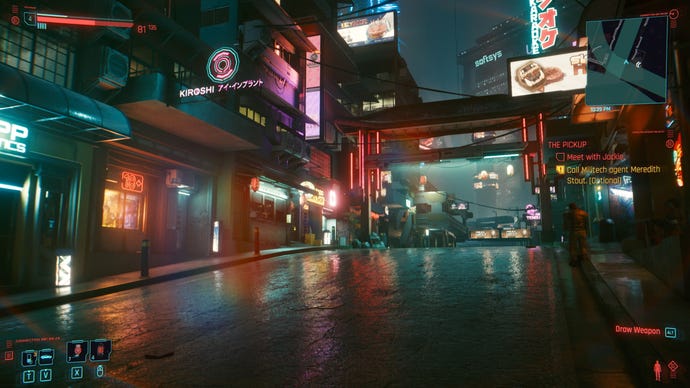
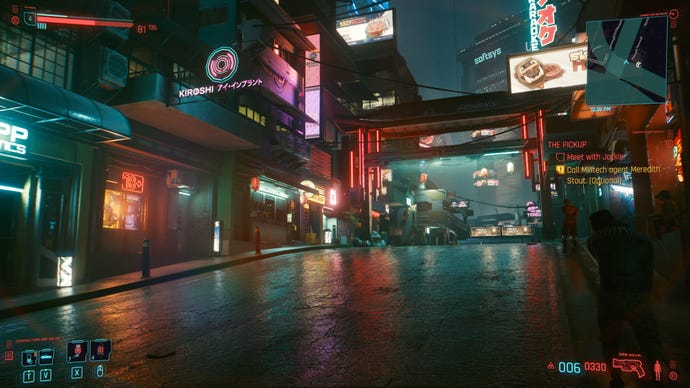

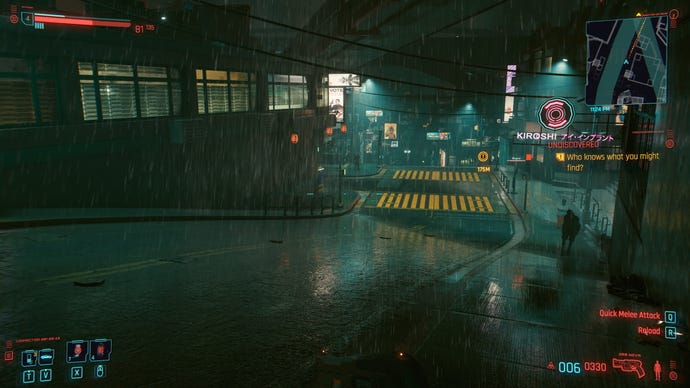

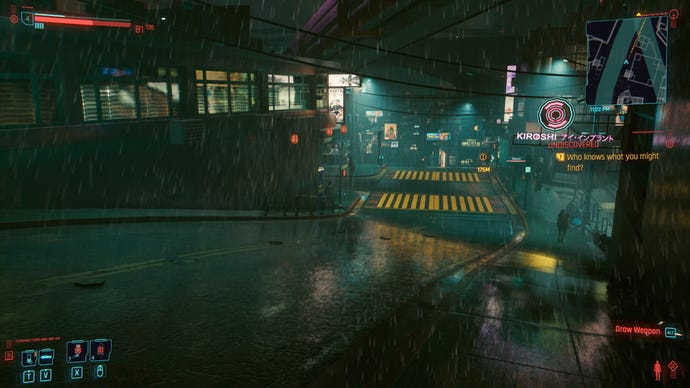
Instead, it's only big puddles of water where you can really see the full impact of ray traced reflections, as you can see below.

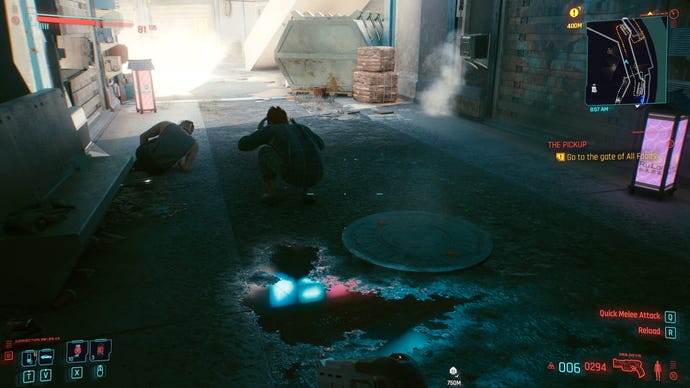
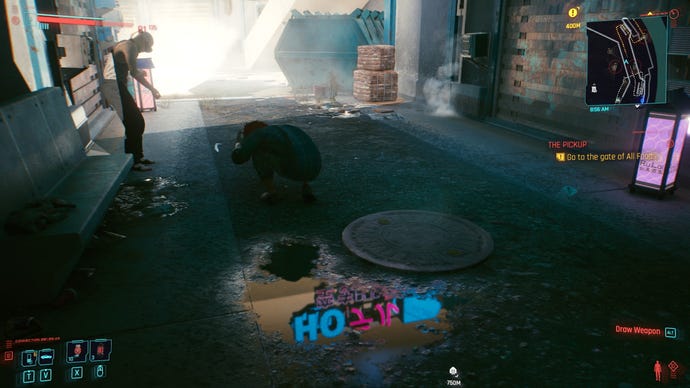
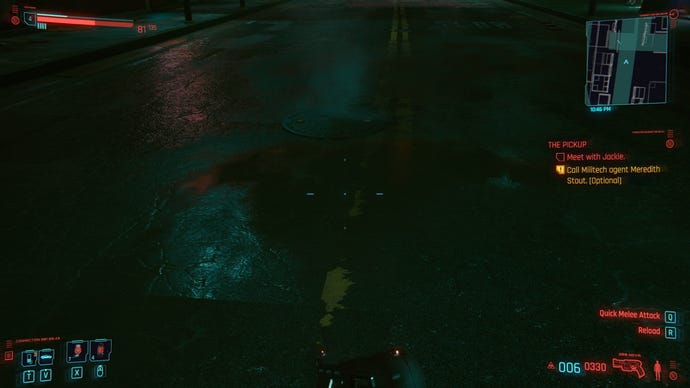
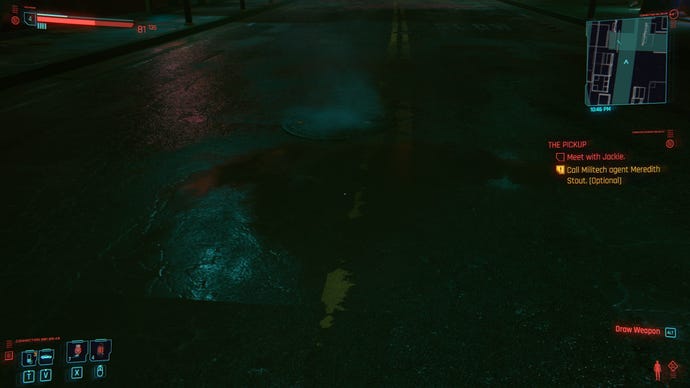
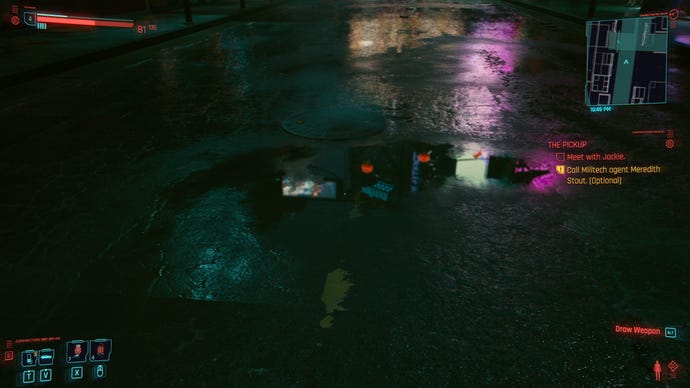
Interestingly, your character V is about the only thing that isn't reflected in the world of Cyberpunk 2077, so you'll only ever see the world staring back at you rather than your own face. This is disappointing, especially after the lovely ray traced reflections implementations we've seen in other games, such as Control and Watch Dogs Legion, but I can only assume it's because your appearance is so variable depending on what clothes you're currently wearing. Indeed, even just looking in the mirror in your apartment is requires you to select it and enter a special viewing mode, so maybe having V reflected in the world as well was just deemed too much for it to handle (although at least the mirror bugs seem to have thankfully been ironed out now).
As for the game's ray traced shadows, this is enabled on both the RT Medium and RT Ultra presets, and looks pretty much identical across both settings. As for whether it's "better" than regular shadows, it really depends on how much you dig soft lighting.
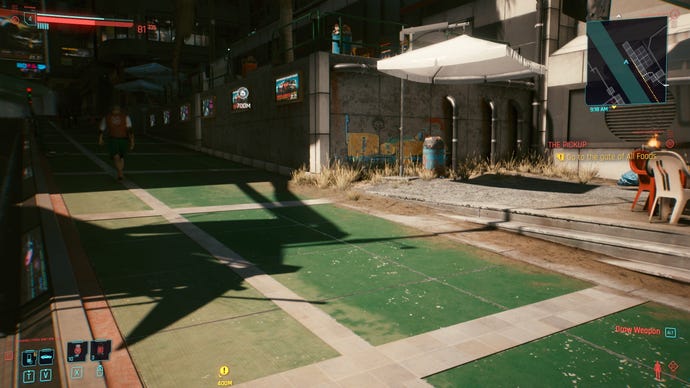

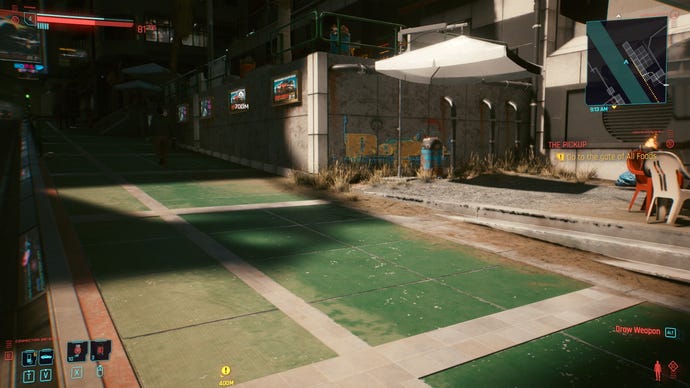
The other ray traced lighting effects are slightly harder to pin down into individual examples. Ambient occlusion, for example, is all to do with ambient light - the kind of soft shadows that help ground objects in a scene - whereas global illumination is all to do with the way light strikes a particular surface - the kind of natural illumination you get from the sun and other light sources. Diffuse illumination, on the other hand, is tied up with emissive lighting - the kind of glow you get from neon signs and the like. They're all very closely related, so here are some general 'lighting' shots I've seen around the city to give you an idea of when ray tracing is and isn't in effect.
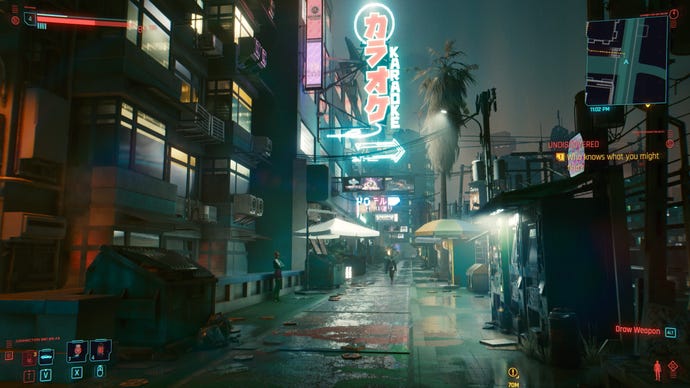
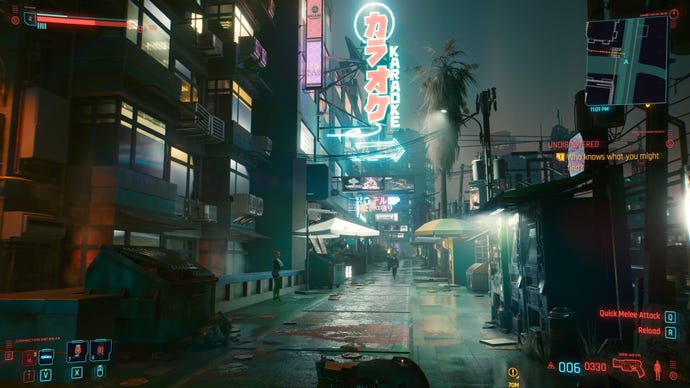
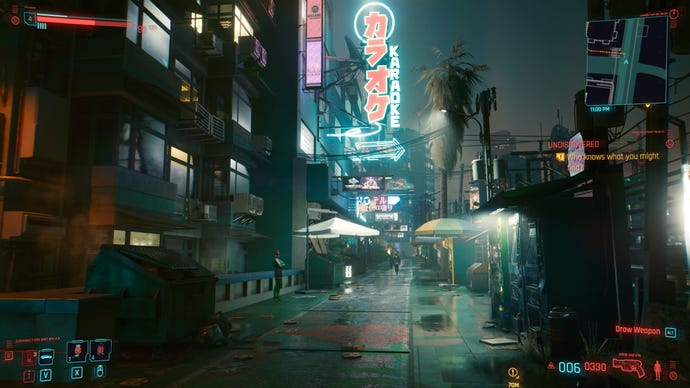
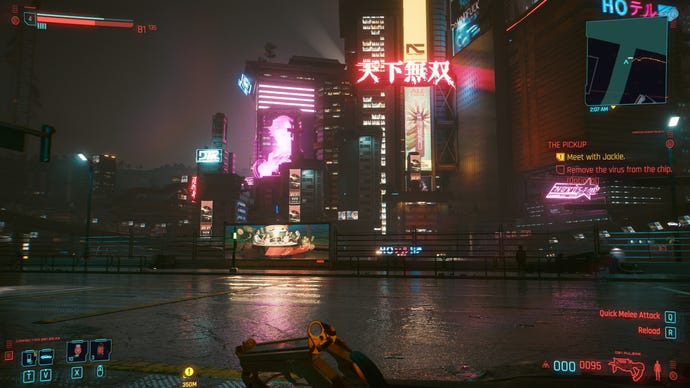

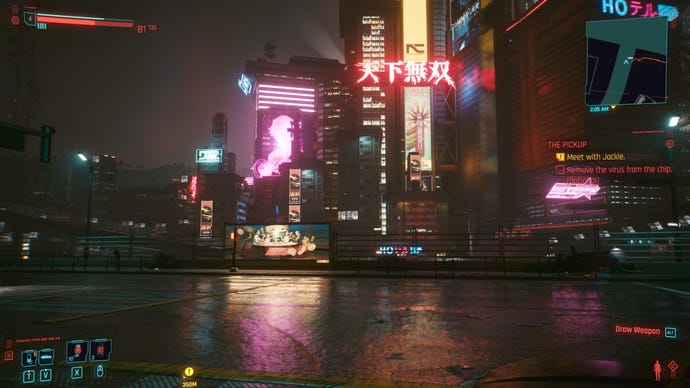

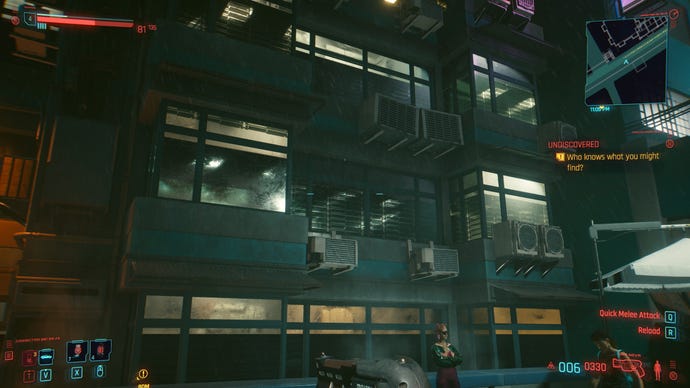
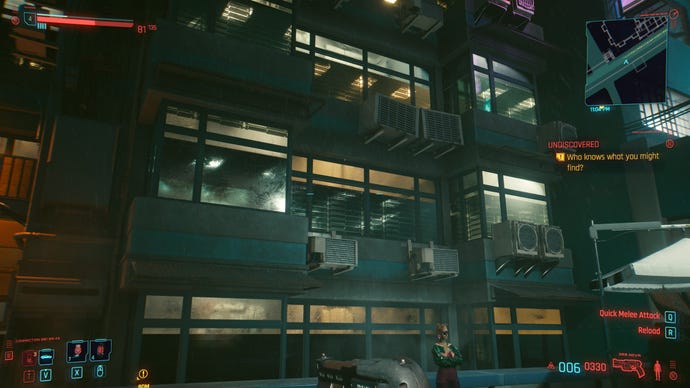
In the top set of images, Ultra and RT Medium are once again very similar. The lights coming out of the windows on the left are almost identical, as are the wet patches on the ground directly in front of me. Even the big neon sign doesn't seem to be having a huge impact on the surrounding environment, and it's only when you step up to RT Ultra that you begin to see a difference. Here, the windows and puddles are reflecting the outside world, and there's a greater variety of shadows and soft-lighting around the neon sign.
The same goes for the next cityscape, too. The neon signs are more accurately reflected in the surrounding buildings when you're got RT Ultra enabled, and there's a much softer gradient in the areas where light meets shadow. It's quite subtle, but if you dig fine details, then there are plenty to be found on RT Ultra. RT Medium, on the other hand, still looks a lot like regular Ultra to me.
The latter is also true of the last set of images as well - at least to my eyes, anyway. RT Medium does add a lot more ray traced shadows into the mix, admittedly (see the rooftops in the lower right corner), but in terms of lighting, it all looks quite similar to me. The lights in the buildings are pretty much the same, and you get a very similar red glow coming off the 24 sign in the foreground. RT Ultra, meanwhile, is noticeably different, offering more shadows, more definition in the red glow, and a greater sense of depth in the central glass buildings.
In summary: There are no doubt many more examples where RT Medium shines brighter than regular Ultra settings, but honestly, based on what I've seen, it's either go big or go home with Cyberpunk 2077's ray tracing effects. To my eyes, RT Medium just isn't visibly different enough from the game's standard Ultra settings to be really worth bothering with in my books, and if you want to play with any ray tracing effects at all, then let it be ray traced reflections rather than ray traced shadows. The former have a much more visible impact on the game's environment, and are arguably what make it look and feel more 'next-gen' than anything else.
Cyberpunk 2077 ray tracing performance
With that in mind, here's how each Nvidia RTX card I tested fared on both of Cyberpunk 2077's ray tracing presets, both with and without DLSS, as well as what kind of performance you can expect with no ray tracing effects enabled whatsoever. I've covered every RTX card that's currently available (save the ludicrously expensive RTX 3090), so you should be able to get a pretty good idea of how each they all stack up performance-wise.
Nvidia GeForce RTX 2060
Currently Nvidia's most entry-level RTX card, the RTX 2060 isn't really cut out for ray tracing in Cyberpunk 2077. You can get playable frame rates at 1920x1080, but it's far from ideal. Using the RT Medium preset, for example, I saw frame rates between 42-46fps running through the crowded streets near V's apartment, which fell to just 31-37fps on RT Ultra.
DLSS is enabled by default on both RT presets in Cyberpunk 2077, so you're not going to squeeze any more performance out of this card unless you start turning down some of the other graphics settings. Remember, both RT presets use the game's Ultra settings as a baseline, which is already quite the strain on this particular RTX card.
Indeed, I saw a frame rate ranging between 41-51fps on Ultra at 1080p, and it was only by dropping the game down to Medium where it run consistently above 60fps. As such, you'll likely need to make a few compromises on graphical fidelity to play this game with ray tracing enabled at 1080p, so you're probably better off just playing on regular Ultra with DLSS switched on to help bump up the frame rate a bit.
As for playing Cyberpunk 2077 at 2560x1440 with the RTX 2060, it's doable, but again, it's probably not worth the hassle of switching on the game's ray tracing presets. Without DLSS, you'll get the smoothest frame rates on Medium, where I saw a frame rate range of 44-50fps in the same test area, although you can get between 58-71fps on High if you set DLSS to Auto.
If you go straight for the RT Medium setting, prepare to be disappointed, as I saw frame rates of just 21-28fps at this resolution, and that was with the aid of DLSS. RT Ultra was even worse, barely rising above a stuttering 15fps. As for trying to play the game in 4K, just forget it. I saw a playable 54-67fps on Low with DLSS switched on, but anything more was just too choppy.
Nvidia GeForce RTX 2060 Super
With more memory and slightly faster clock speeds at its disposal, the RTX 2060 Super does a slightly better job of handling Cyberpunk 2077's ray tracing effects, but you're still looking at playing at 1920x1080 to get the best speeds. On RT Medium, for example, I saw a frame rate range of 50-56fps in the busy streets outside V's apartment block, while RT Ultra came in with 37-46fps.
The latter is far from ideal, of course, so you'll probably still need to drop the quality setting down a bit to either Medium or High and then turn on some of the game's ray tracing effects if you're determined to play with them switched on.
As for 2560x1440, the RTX 2060 Super is in a very similar boat to the vanilla RTX 2060 at this resolution. It's playable without ray tracing enabled, hitting 50-57fps on Medium without the aid of DLSS.
The good news here, though, is that you can actually get a steady 60fps on Ultra with DLSS switched on, which just wasn't possible on the regular RTX 2060. Alas, while normal Ultra is doable at this resolution with DLSS enabled, its two RT presets are just too much for the RTX 2060 Super at this resolution, as even RT Medium only produced a rather choppy 41-46fps in my testing. RT Ultra, on the other hand, could barely muster much more than 30-34fps.
4K, meanwhile, is just about playable on Low with DLSS switched on, but really, it's just not worth the hassle.
Nvidia GeForce RTX 2070 Super
The RTX 2070 Super is a much better match than either of Nvidia's RTX 2060 cards for playing Cyberpunk 2077 at 1920x1080 with ray tracing switched on, but even this mid-range GPU struggles to play it smoothly on max settings at this resolution. RT Medium produced a steady but occasionally choppy range of 48-62fps in the busy streets directly outside V's apartment block, while RT Ultra saw the figure fall to 43-51fps.
The latter is still playable, but you may be better off opting for High at 1080p and then enabling your desired ray tracing effects and DLSS from there instead. It's a shame, really, as the RTX 2070 Super is capable of producing a smooth 59-72fps on normal, non-ray traced Ultra settings, or even higher if you enable DLSS.
You'll need to switch on DLSS if you're planning on playing at 2560x1440, though, as here the RTX 2070 Super was only able to manage 41-48fps on normal Ultra, as opposed to 57-70fps once DLSS was thrown into the mix. As for the game's two ray tracing presets, I'd once again advise sticking to 1080p if you want the best ray tracing experience, as RT Medium only managed 45-52fps at 1440p, while RT Ultra bobbed along with 34-41fps.
As for 4K, the RTX 2070 Super can manage a decent frame rate of 59-71fps on Medium if you switch on DLSS (you'll only get 30-34fps without it), but ray tracing just isn't worth it at this resolution. RT Medium is just about doable at 30-35fps, but you'll get a better-looking game and steadier frame rates at lower resolutions.
Nvidia GeForce RTX 2080 Super
The RTX 2080 Super may have since been replaced by the RTX 3080, but this is still a decent graphics card for playing Cyberpunk 2077 with ray tracing switched on. At 1920x1080, you're looking at a very playable 50-63fps on RT Medium, while RT Ultra will get you an almost equally smooth 49-55fps at this resolution.
Alas, that's probably about as good as it's going to get with this particular RTX card, as things get increasingly choppy once you bump up the resolution to 2560x1440. Heck, even regular Ultra only yielded a frame rate of 45-50fps with this card, although bizarrely RT Medium actually bumped this up a bit to 47-56fps.
Again, this kind of frame rate is doable, but it's still not ideal, so you may be better off dropping the quality down to High instead and switching on DLSS and your desired ray tracing effects from there instead to help push those numbers up.
Alas, if you were hoping to play Cyberpunk 2077 at 4K with ray tracing enabled with this card, think again. It can manage a perfectly playable 52-60fps on its regular Ultra setting at this resolution (or 56-68fps on High) if you make sure DLSS is switched on (otherwise you're looking at sub-30 frame rates), but switching over to RT Medium will see those 60fps speeds tumble all the way down to just 32-39fps.
Nvidia GeForce RTX 2080 Ti
Once Nvidia's most powerful graphics card, the RTX 2080 Ti has definitely met its match with Cyberpunk 2077's ray tracing settings. Admittedly, there's quite a lot of similarity between my RTX 2080 Ti results and those I obtained for the RTX 2080 Super at 1920x1080, so I wouldn't be surprised if my CPU was acting as a bit of a bottleneck here. Still, I'm not sure swapping out my Core i5 for a Core i7 or Core i9 would make a huge amount of difference in this particular case, as you're still looking at a very smooth 50-60fps on RT Medium at this resolution and a playable 46-57fps on RT Ultra.
Sure, you might be able to squeeze a few extra frames out of these results with a more powerful CPU, but both RT presets are still very much achievable at this resolution, even with a middling Core i5.
As we move up the resolution chain to 2560x1440, your CPU becomes much less important, as the main bottleneck here is still your GPU. Here, the RTX 2080 Ti overtook its RTX 2080 Super sibling, and actually produced largely similar frame rates to its 1080p results outlined above.
On RT Medium, for example, I saw an identical range of 50-60fps at 1440p, while RT Ultra came in with a very similar 47-53fps result. Sure, it's not the perfect 60fps you might expect from Nvidia's previous flagship GPU, but an average of 50fps is still very playable here.
If you were hoping to do some 4K Cyberpunk-ing, however, then you'll need to temper expectations. While it can manage a smooth 58-69fps on Ultra with DLSS switched on (versus just 28-32fps without), moving up to RT Medium will see that frame rate tumble to just 40-48fps. Personally, that's just a bit too choppy to be worth bothering with at this resolution for me, especially given how similar it looks to its regular Ultra setting. It's doable, sure, but if you want everything dialled up to the nines, then you'll get much better results by sticking to 1440p here.
Nvidia GeForce RTX 3060 Ti
Before the launch of the RTX 3060 Ti, Nvidia told me this was going to be the best GPU for playing Cyberpunk 2077 at 1080p on max ray tracing settings. Admittedly, while the newest member of Nvidia's RTX 30 family is certainly the best RTX 30 card for playing it at 1920x1080 on non-ray traced max settings (producing a smooth 62-72fps in the busy streets outside V's apartment), I can't say the same for its actual ray tracing performance here.
Indeed, neither of its RT presets could hit a consistent 60fps at 1920x1080, with RT Medium ranging between 47-60fps and RT Ultra just 45-56fps. Both are still very playable, of course, but they're hardly what I'd call optimal performance speeds either.
Still, I'd definitely recommend this over trying to play the game at 2560x1440 with ray tracing switched on, for while the RTX 3060 Ti can hit a very agreeable 55-68fps on Ultra without ray tracing thanks to the aid of DLSS, RT Medium drags that down to 47-56fps. In truth, those numbers aren't actually that dissimilar from the experience you'll get at 1080p with this particular preset, so you may still want to give it a go regardless.
RT Ultra, on the other hand, will likely be too much for most, as I only saw frame rates of 40-48fps at 1440p, which was verging on being a bit juddery.
In its defence, DLSS does give the RTX 3060 Ti a decent leg up when it comes to running the game at 4K, as I saw a very smooth 57-67fps on High and even 54-61fps on Ultra here. However, I wouldn't advise adding ray tracing to the mix here, as even RT Medium barely managed 35-42fps at this resolution. This isn't exactly surprising given the RTX 3060 Ti isn't really geared up for 4K gaming in general, but at least DLSS gives you the option of playing it without any ray tracing effects, which is a lot more than can be said of either of its RTX 2060 predecessors.
Nvidia GeForce RTX 3070
If you're looking to upgrade your graphics card to play Cyberpunk 2077, then the RTX 3070 is probably going to be your most cost effective option. Not only is it capable of playing the game at smooth frame rates at all resolutions without ray tracing enabled, but it's also one of the only RTX cards I've tested so far that can manage to stay above 50fps on max ray tracing settings at 1080p (the other being the even more expensive RTX 3080). a smooth 60fps is still beyond its reach at this resolution, but it's arguably the best you're going to get for the foreseeable future.
Indeed, at 1920x1080, the RTX 3070 managed 54-63fps on RT Medium at this resolution as I ran through the busy, crowded streets outside V's apartment block, and it produced an equally smooth 52-58fps on RT Ultra - and without the aid of a frame rate counter, I'm not sure I'd be able to tell the difference here between an average of 55fps and a full 60fps.
Performance became a little choppier as I moved up to 2560x1440, admittedly, but we're still looking at some very playable frame rates here. Indeed, on RT Medium, the RTX 3070 stayed largely in the low 50s again with its frame rate range of 48-62fps, while RT Ultra saw it fall just on the other side of the 50fps mark, ranging from 42-55fps.
The latter isn't exactly ideal, I know, so you may want to opt for the game's High preset instead in this particular case, and then switch on DLSS and your ray tracing effects of choice from there.
I wouldn't recommend trying to play Cyberpunk 2077 at 4K with the RTX 3070, at least not when it comes to ray tracing. You'll manage some very smooth frame rates on its non-ray traced presets, but RT Medium will see all that hard work tumble to 36-43fps here, which is just too juddery to play for prolonged periods of time. And you can forget RT Ultra, too, as this only managed an abysmal 14-20fps. Instead, stick with either 1080p or 1440p if you're after a decent ray tracing experience, as we'll likely have to wait at least another whole generation of graphics cards before we get something that can even come close to doing this game justice at 4K.
Nvidia GeForce RTX 3080
Nvidia's new flagship RTX 30-series GPU, the RTX 3080 is hands down the best graphics card to play Cyberpunk 2077 with ray tracing switched on at the moment - and you'd jolly well hope so given how much it costs. It may be rarer than hen's teeth right now, but if you're after a playable ray tracing experience at 1080p, 1440p and even a bit of 4K, this is the card to get.
Starting at 1920x1080, the RTX 3080 chewed through its RT Medium preset, running at a very smooth 57-68fps in the crowded streets outside V's apartment building, and it even managed a very similar 58-64fps on RT Ultra.
Again, much like my RTX 2080 Ti results, I suspect you'll get even better frame rates at this resolution if you've got a more powerful CPU inside your PC, as my 2560x1440 speeds were pretty identical to the numbers outlined above. RT Medium, for example, came in with a very similar range of 58-66fps, while RT Ultra breezed through with 55-62fps.
The RTX 3080 is also the best GPU for attempting to play Cyberpunk 2077 at 4K, too. You'll still need to switch on DLSS at this resolution to get playable speeds on its non-ray traced presets, but RT Medium still managed a very playable 53-60fps at this resolution, which is pretty darn impressive given the RTX 2080 Super could barely manage much more than an average in the mid-30s here.
RT Ultra, meanwhile, is just about doable with the RTX 3080, but really, it's probably just beyond what's comfortable capable of, ranging between just 44-50fps. To be honest, you might as well give it a go if you were lucky enough to snag an RTX 3080 at launch, just to see what it's like and whether you're okay with those sorts of frame rates, but there's no denying you'll get better results by opting for High instead and enabling ray tracing and DLSS from there.
Either way, you're getting pretty great speeds regardless of what resolution you choose to play at, so go forth and enjoy.









